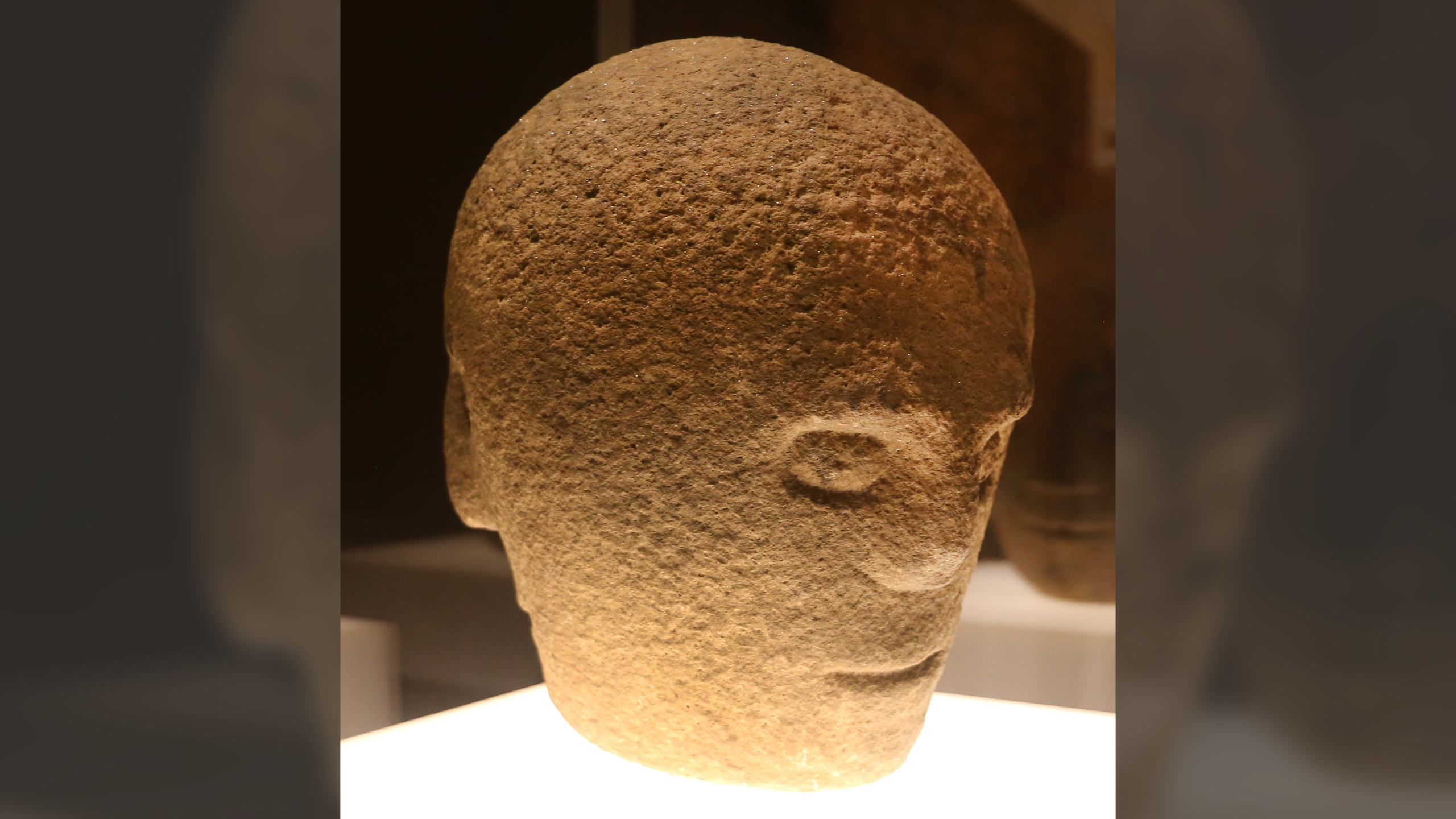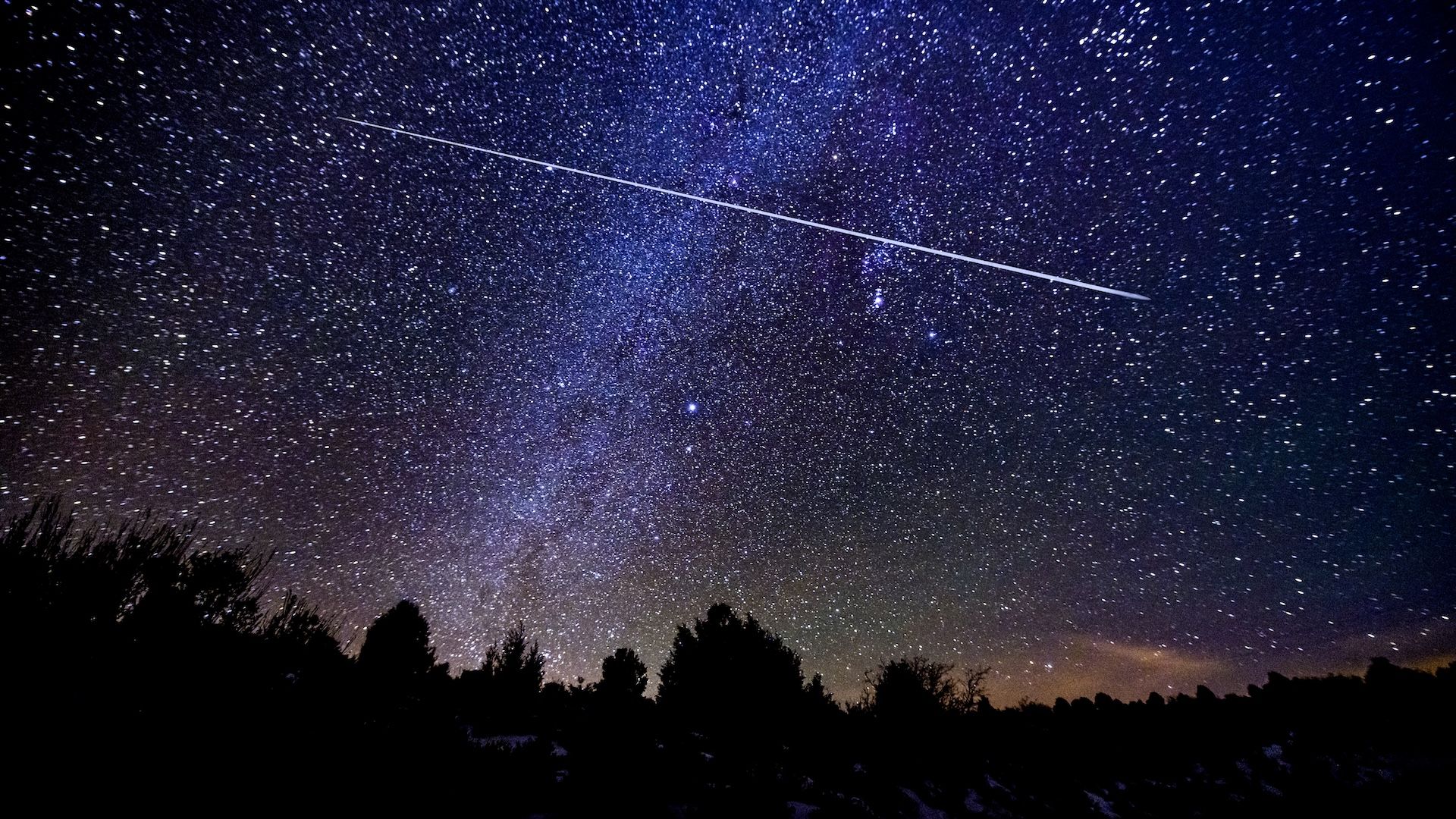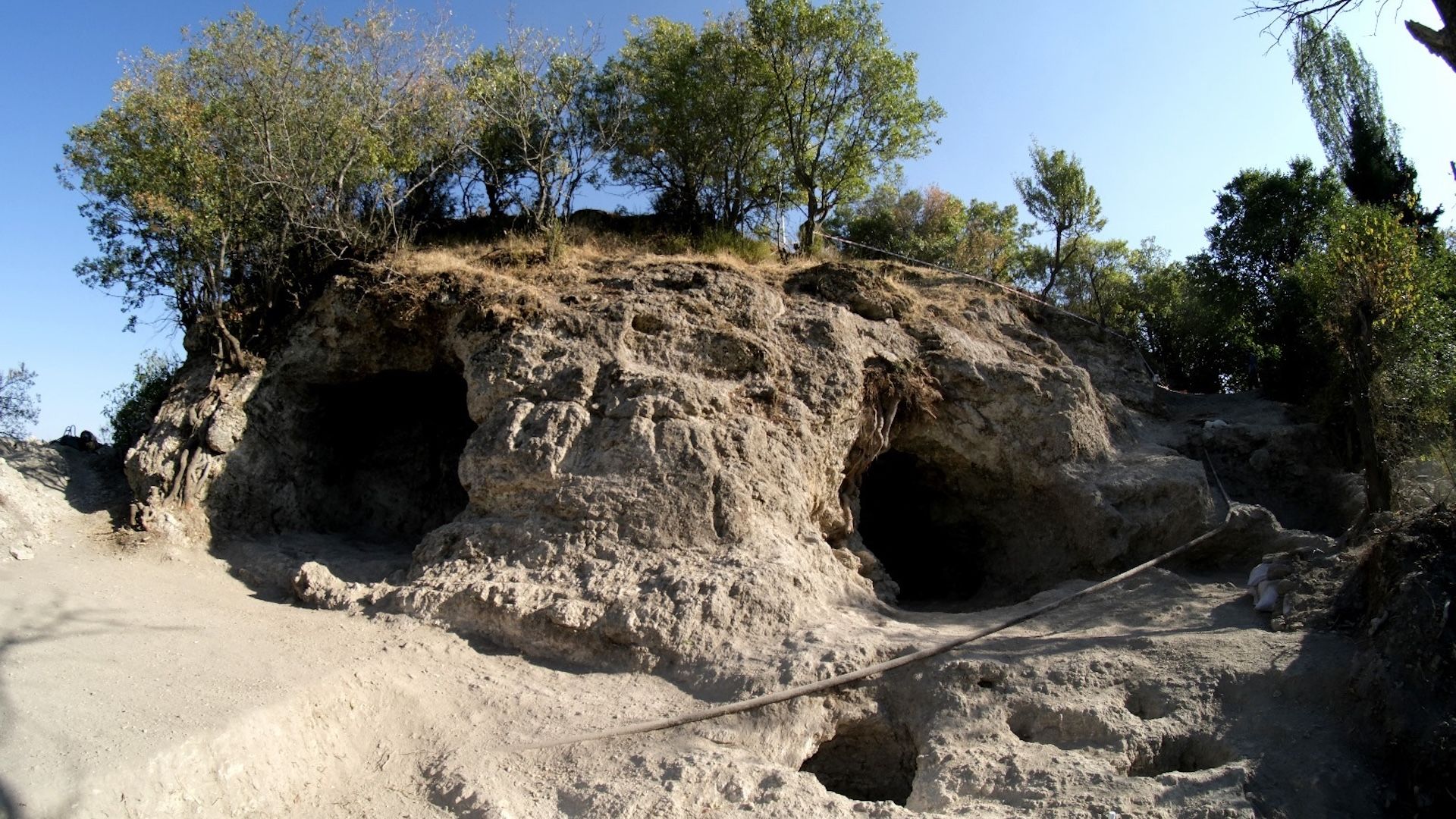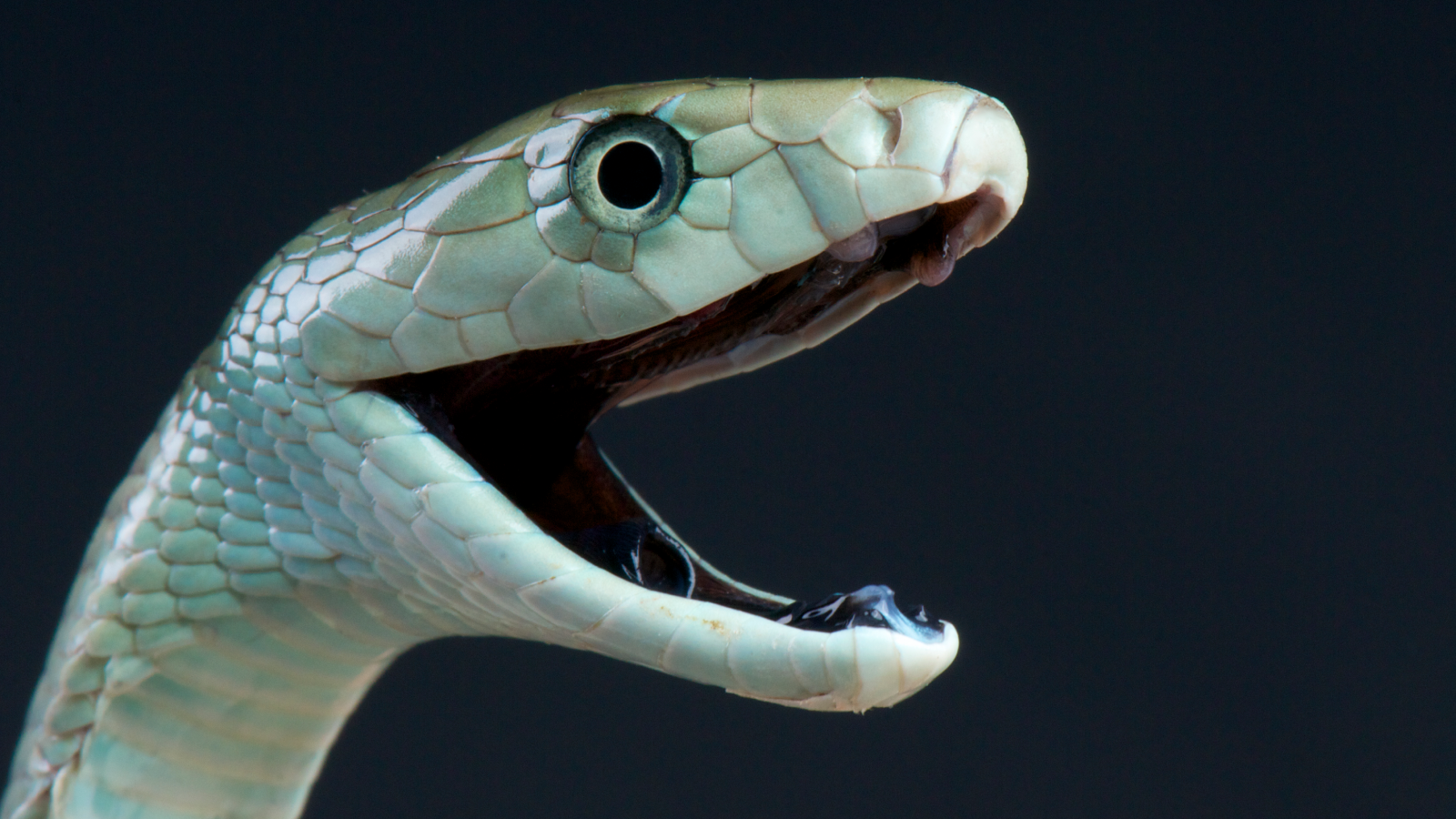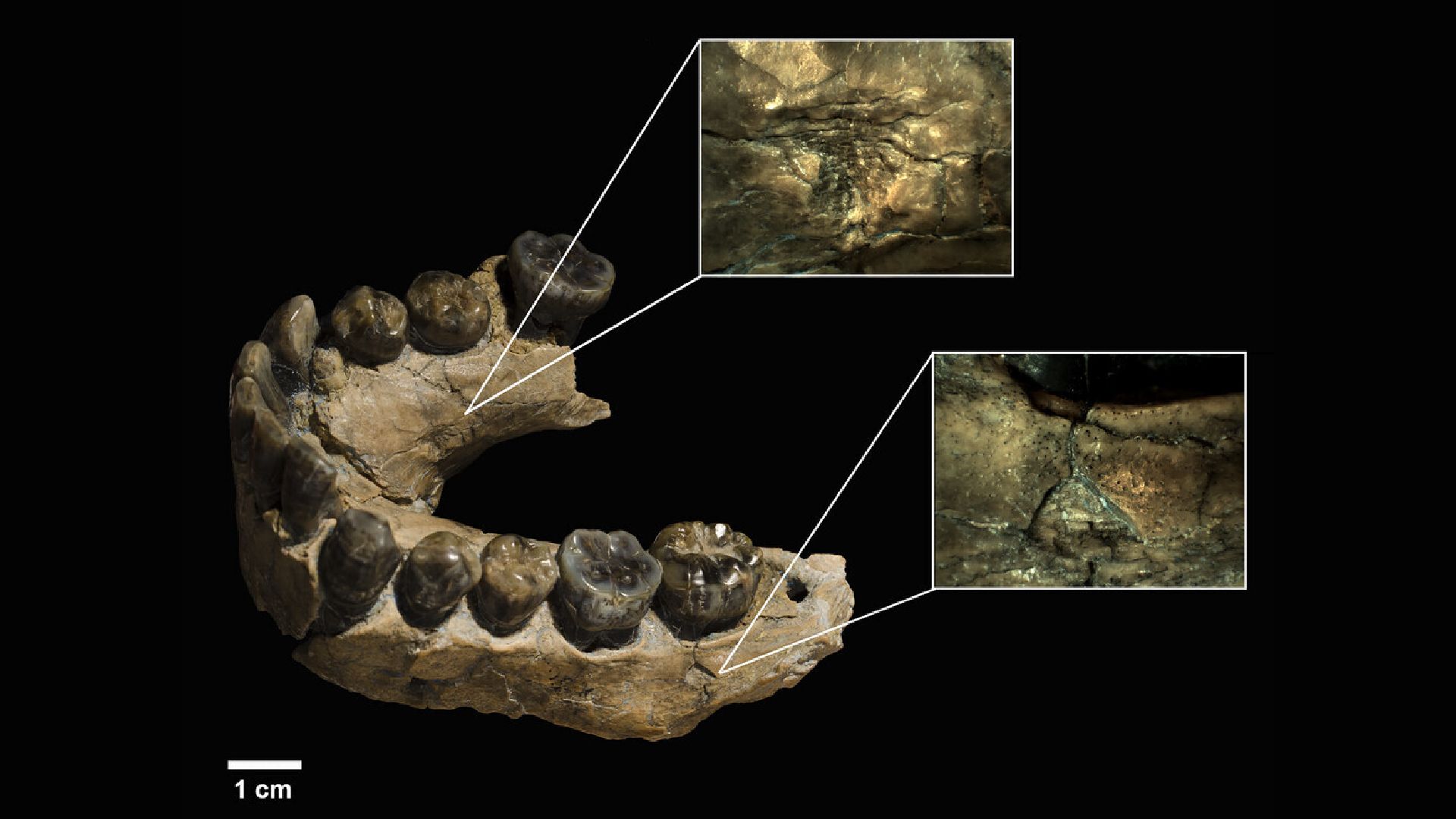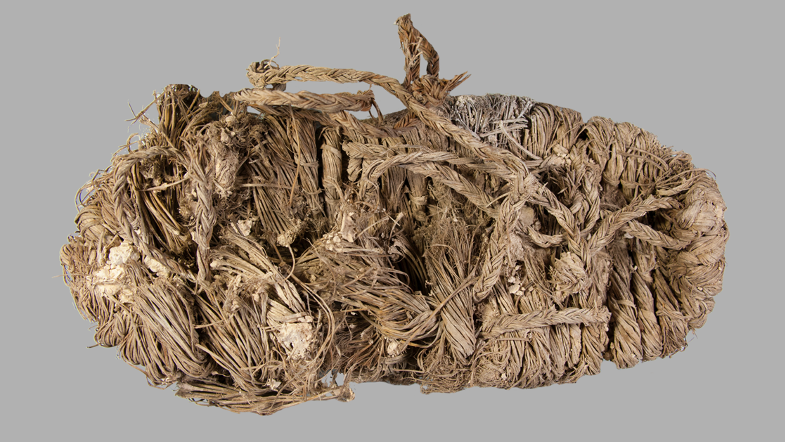QUICK FACTS
Name: Corleck Head
What it is: A three-faced sandstone sculpture
Where it is from: County Cavan, Ireland
When it was made: First century
This carved stone head was discovered in 1855 in the Irish town of Drumeague, about 60 miles (100 kilometers) northwest of Dublin. The three-faced (also called tricephalic or janiform) head was likely created by the Celts in the first century in celebration of a pagan ritual.
In a 1960 study of tricephalic stone heads, archaeologist Anne Ross wrote that the “cult of the head” was a deep-rooted tradition in Celtic society connected to the concepts of divinity and supernatural power. The idea of the cult originated with ancient Greek historian Diodorus Siculus, who wrote in the first century B.C. that the Celts were fond of cutting off their enemies’ heads and displaying them fastened to the necks of their horses.
But the exact meaning of the Corleck Head continues to be debated.
In a 2023 lecture, historian Jonathan Smyth laid out several possible meanings for the enigmatic sculpture. It may have been a representation of the Celtic god Lugh, displayed on a pillar as a phallic symbol of fertility. Lugh was a master craftsman, and the three faces may represent different technologies. This attribution would suggest that the Corleck Head was used in Lughnasa, the Celtic harvest festival.
MORE ASTONISHING ARTIFACTS
According to Smyth, the Corleck Head may have even signaled the opposite: destruction. Drumeague, where the object was found, can be translated from Irish as the “Hill of Death,” and the body of a sacrificed Iron Age man was discovered nearby. The man, like other bog bodies, had been killed in three ways: strangled, bludgeoned and slashed through the throat.
Regardless of whether the Corleck Head was associated with human sacrifice, archaeologists think medieval Irish people believed the pagan sculpture was cursed and, therefore, buried it sometime between the 10th and 13th centuries to suppress early Celtic religious traditions.
For more stunning archaeological discoveries, check out our Astonishing Artifacts archives.





